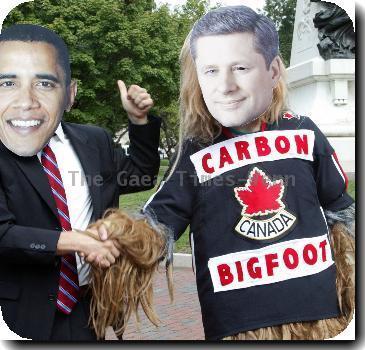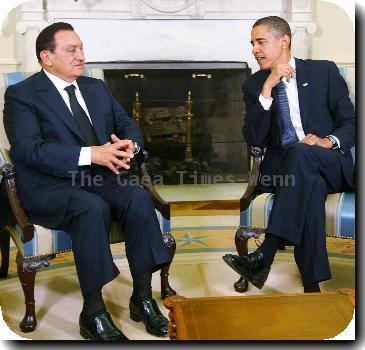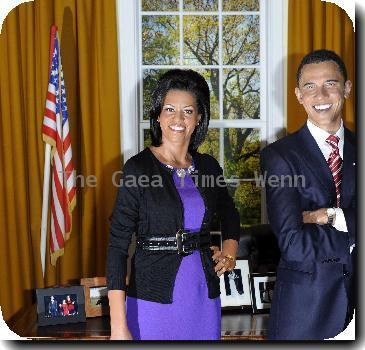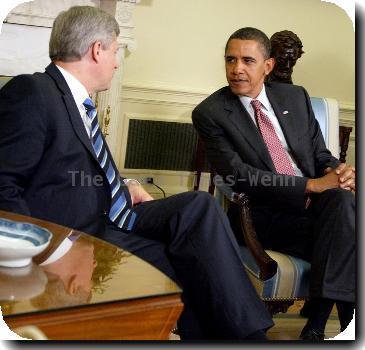Obama administration looks to bring campaign-style discipline back to the White House
By Julie Pace, APTuesday, February 16, 2010
Obama seeks return to campaign-style discipline
WASHINGTON — Facing criticism that President Barack Obama isn’t connecting with the American people, the White House is infusing its communications strategy with some of the ironclad discipline and outside-the-box thinking that made the Obama presidential campaign famous — and successful.
Sensitive about talk that the president was sometimes overexposed during his first year in office, the administration now is more discriminating about how and when the president deals with media — and about whom he talks to when he does.
Aides say there’s no formal reevaluation of the administration’s communications strategy as the president embarks on his second year in office. But with Obama’s poll numbers flat-lining, his agenda on the ropes and Democrats increasingly worried about losing ground in November’s midterm elections, the White House is taking an approach to getting out the message about the president’s accomplishments and goals that is at once more aggressive and more streamlined.
That includes:
— More direct, rapid response to criticism. Through blog postings on the White House Web site by a small cast of Obama aides and unsolicited e-mails from press secretary Robert Gibbs blasted to the White House’s vast press list, the administration seeks to more quickly and widely counter perceived misinformation. And Gibbs has finally resorted to Twitter.
— More events at which the president speaks directly to the public without the filter of the media, including town hall meetings around the country as well as such events as a recent online question-and-answer session streamed on YouTube and a televised live exchange with House Republicans.
— Carefully choreographed interactions with the press. Instead of holding news conferences, which can cover many topics and put reporters in competition with the president for the spotlight, the Obama team is trying to place a premium on its media interactions.
It’s an approach similar to the one employed successfully by the Obama campaign during the 2008 presidential race.
“We ran everything through one strategic filter — how does this help us win the election?” said White House communications director Dan Pfeiffer, who held the same title during the campaign. “Anything that didn’t help us do that, we didn’t do.”
Pfeiffer said it’s been more difficult to achieve that level of discipline in the White House, where there are not only looming elections to worry about, but talks with lawmakers on Capitol Hill, allies in the international community and a bigger, less close-knit staff.
One senior White House official said aides increasingly are focused on using the president’s time more efficiently and more strategically. The official spoke on the condition of anonymity to discuss internal White House discussions.
The emphasis on impact is reflected in the 10 interviews Obama has chosen to do so far this year — three with high-profile television anchors, including an interview with CBS News anchor Katie Couric that was broadcast live before the Super Bowl; four interviews with prominent national magazines; a national radio interview; and the online YouTube interview that incorporated questions from the public.
The 10th interview, with the Bloomberg subsidiary Business Week, was the only one the president has done this year with a reporter who regularly covers the White House, a group often more familiar than anchors or other high-wattage interviewers with the daily ups and downs of the president and his policies.
Aides insist that the focus on high-impact interviews doesn’t mean the president is avoiding the White House press corps. Several reporters from news organizations that regularly cover the White House, including The Associated Press, were among the 161 interviews Obama gave in his first year in office — more than three times the number granted by former President George W. Bush, for instance.
But the White House has been willing to circumvent some of the traditional communications channels that long have defined the relationship between the president and the media. The president went nearly seven months without a formal news conference before making a surprise appearance in the White House briefing room last week. Obama also has been less willing of late to answer questions in informal settings.
Pfeiffer said the White House is simply trying to update itself to reflect modern times and technology. So that means going to Web-only publications such as Talking Points Memo while also using Facebook, specialty magazines and TV outlets.
“The fundamental structure of communications at the White House and the outlets for presidential communication were largely the same when we came to office as they were when Jimmy Carter came to office,” he said.
Still, Pfeiffer acknowledged that even the administration’s best efforts can accomplish only so much.
“There is no communications strategy that makes 10 percent unemployment look good,” he said.
Tags: Barack Obama, District Of Columbia, Facebook, Geography, House Elections, Journalism, North America, Tv News, Twitter, United States, Washington, Youtube



